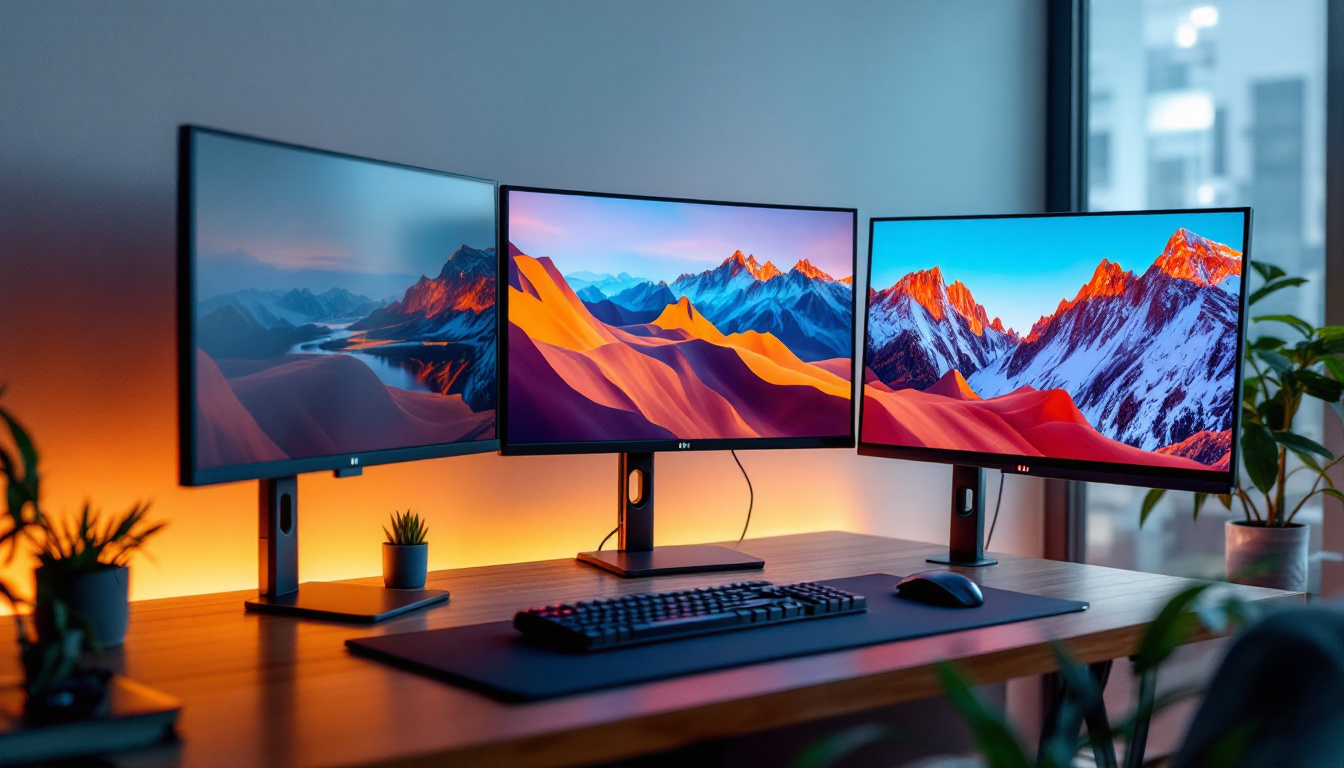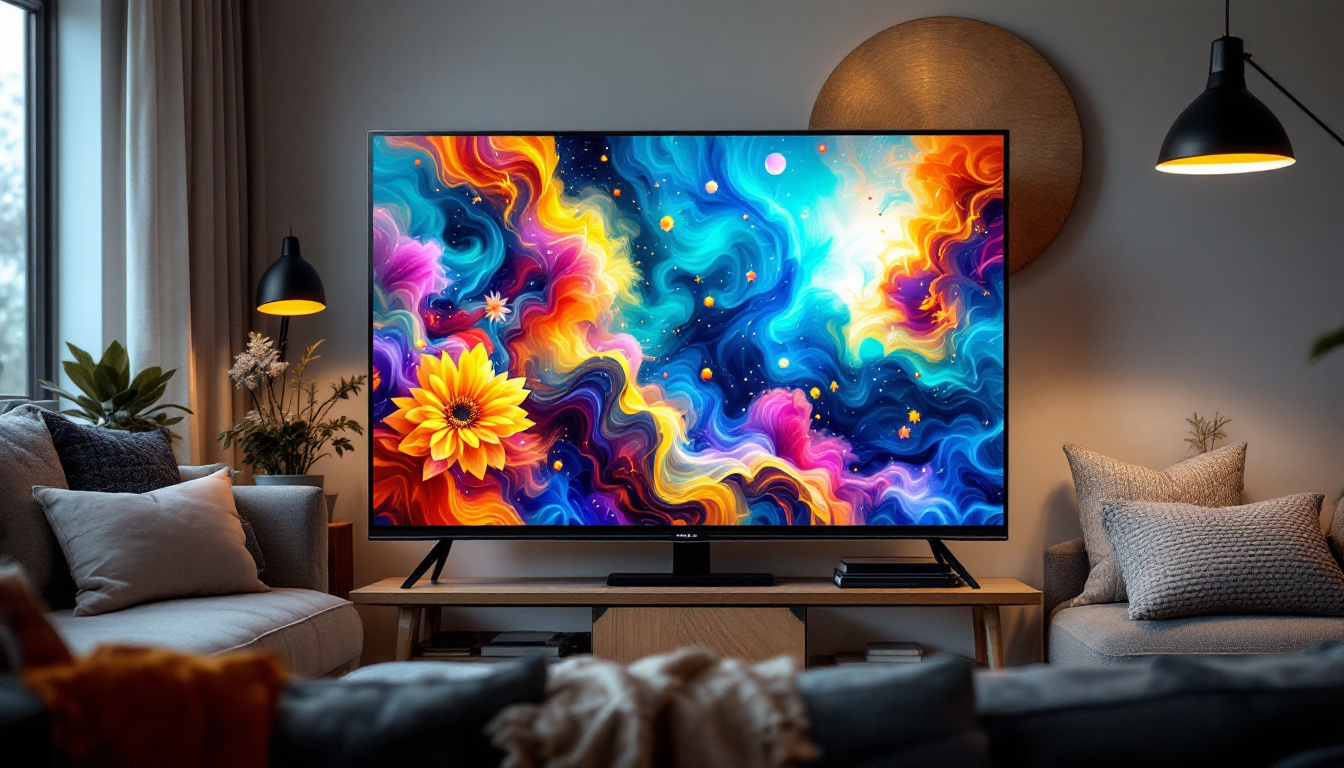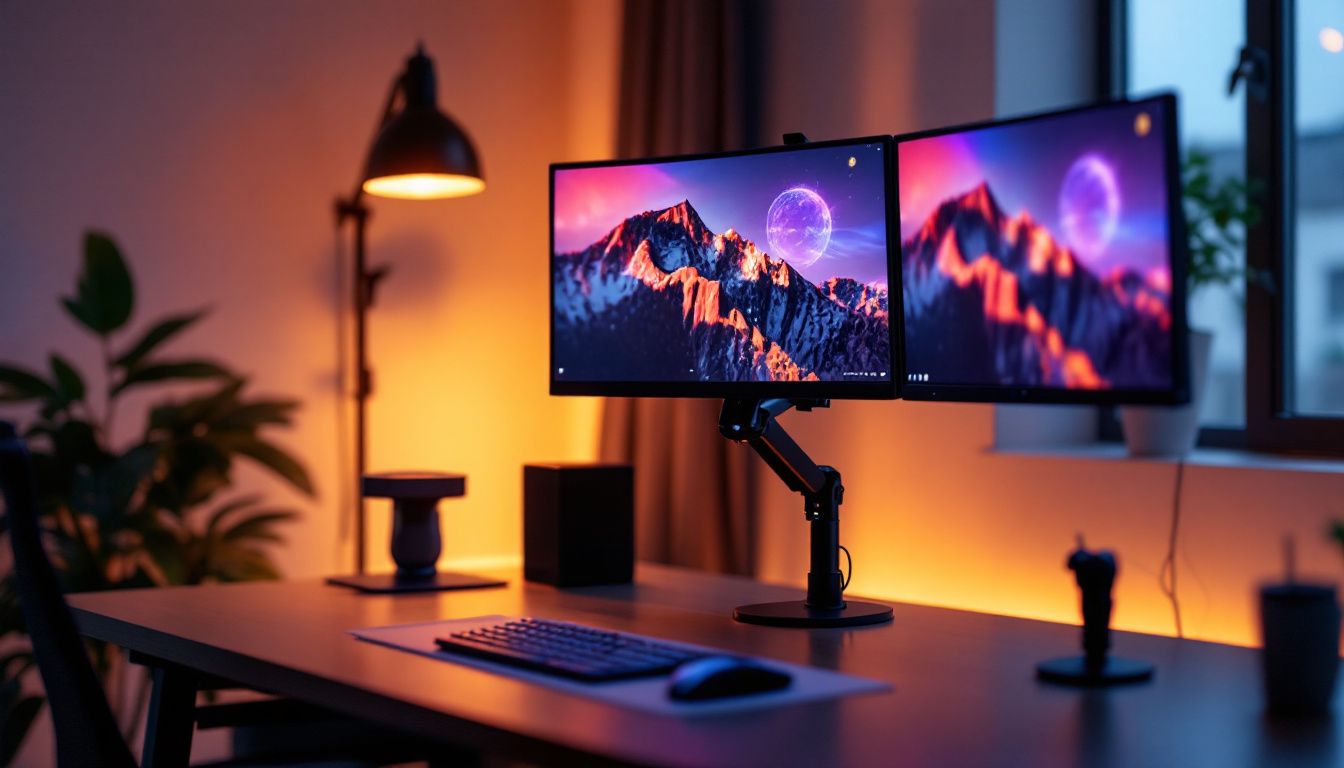In today’s fast-paced digital world, the importance of a well-organized workspace cannot be overstated. As more people work from home or in hybrid environments, the need for ergonomic and efficient setups has surged. One of the key components of a productive workspace is the monitor stand. This article will explore three different types of monitor stands, focusing on how they can enhance the use of LED displays.
Understanding Monitor Stands
monitor stands serve a crucial role in optimizing the viewing experience and maintaining a healthy posture. They elevate the monitor to eye level, reducing strain on the neck and back. Additionally, they can help declutter the workspace by providing extra storage options. With various designs available, choosing the right monitor stand can significantly impact productivity and comfort. Beyond just physical elevation, monitor stands can also influence the overall ergonomics of your workspace, which is increasingly important in our digital age where many people spend hours in front of screens.
Moreover, the right monitor stand can contribute to a more organized and efficient work environment. By allowing users to adjust the height and angle of their screens, these stands can help create a more personalized setup that caters to individual preferences. This customization can lead to a more enjoyable work experience, as users can tailor their workspace to suit their needs, whether they are working from home or in an office setting.
Types of Monitor Stands
There are several types of monitor stands available in the market, each designed to meet different needs and preferences. The most common types include fixed stands, adjustable stands, and wall-mounted options. Each type offers unique advantages, making it essential to understand their features before making a purchase. Fixed stands are often more stable and can provide a sleek, minimalist look, while adjustable stands allow for greater flexibility in height and angle, catering to various tasks and user heights. Wall-mounted options, on the other hand, are perfect for saving desk space and can create a modern, streamlined appearance in any workspace.
Additionally, some monitor stands come equipped with features such as built-in USB ports or wireless charging capabilities, further enhancing their functionality. For those who frequently switch between sitting and standing while working, height-adjustable stands can be particularly beneficial, promoting a more dynamic work routine that can help combat fatigue and improve circulation. Understanding the nuances of each type can empower users to make informed decisions that best suit their work habits and physical needs.
Benefits of Using a Monitor Stand
The benefits of using a monitor stand extend beyond aesthetics. Proper monitor height can prevent discomfort and long-term health issues. Additionally, a well-placed monitor can enhance focus and reduce distractions, leading to improved work performance. Furthermore, many monitor stands come with added features like cable management systems, which can help keep the workspace tidy. By organizing cables and peripherals, users can create a more visually appealing environment that fosters concentration and creativity.
Furthermore, investing in a quality monitor stand can also lead to increased longevity for your monitor. By providing a stable and secure base, monitor stands can help prevent accidental tipping or damage, ensuring that your equipment remains in top condition for years to come. Additionally, many stands are designed with ventilation in mind, allowing for better airflow around the monitor, which can prevent overheating and enhance performance. This combination of practicality and protection makes monitor stands an essential accessory for anyone looking to optimize their workspace.
Fixed Monitor Stands
Fixed monitor stands are designed to hold the monitor at a set height. They are typically more affordable and straightforward, making them an excellent choice for those who prefer simplicity. While they lack the flexibility of adjustable stands, they still provide significant ergonomic benefits.
Design and Functionality
Fixed monitor stands usually come in various materials, including plastic, metal, and wood. Their design often focuses on stability and ease of use. Many fixed stands also feature a minimalist aesthetic, which can complement modern office decor. Although they do not offer height adjustments, they are often designed to accommodate the average eye level of most users.
Ideal Use Cases
These stands are ideal for users who have a consistent working height and do not require frequent adjustments. They are perfect for home offices, schools, or any environment where the monitor setup remains static. Additionally, fixed stands can be an excellent choice for secondary monitors, providing a stable platform without taking up too much space.
Adjustable Monitor Stands
Adjustable monitor stands offer flexibility that fixed stands cannot match. They allow users to customize the height and angle of their monitors, ensuring optimal viewing positions for various tasks. This adaptability can be particularly beneficial for shared workspaces where multiple users may have different ergonomic needs.
Features and Advantages
Most adjustable stands come with a range of features, including height adjustments, tilt options, and even swivel capabilities. These features enable users to find the perfect position for their monitors, reducing strain on the neck and eyes. Additionally, many adjustable stands are designed with built-in cable management systems, helping to keep wires organized and out of sight.
Choosing the Right Adjustable Stand
When selecting an adjustable monitor stand, consider the range of height adjustments it offers. Some stands can be raised or lowered significantly, while others may have limited movement. Additionally, check the weight capacity to ensure it can support your monitor. Finally, look for stands that are easy to adjust, as cumbersome mechanisms can lead to frustration.
Wall-Mounted Monitor Stands
Wall-mounted monitor stands are an innovative solution for maximizing workspace efficiency. By mounting the monitor on the wall, users can free up valuable desk space while also achieving an optimal viewing height. This type of stand is particularly popular in modern office designs and can create a sleek, uncluttered look.
Space-Saving Benefits
One of the most significant advantages of wall-mounted stands is their ability to save space. By eliminating the need for a bulky desk stand, users can utilize their desks for other purposes, such as writing or using additional equipment. This setup is especially beneficial in small offices or home workspaces where every inch counts.
Installation Considerations
While wall-mounted stands offer numerous benefits, they do require careful installation. It is essential to ensure that the wall can support the weight of the monitor and the stand. Additionally, users should consider the height at which the monitor is mounted to ensure it is comfortable for viewing. Professional installation may be recommended for those unfamiliar with mounting techniques.
LED Displays and Their Compatibility with Monitor Stands
LED displays have become increasingly popular due to their vibrant colors, energy efficiency, and slim profiles. Understanding how monitor stands interact with LED displays is essential for maximizing their potential. Compatibility and support are crucial factors to consider when selecting a monitor stand.
Weight and Size Considerations
When choosing a monitor stand for an LED display, it is vital to check the weight and size specifications. Most stands will list their maximum weight capacity, which should comfortably accommodate the monitor. Additionally, ensure that the stand’s dimensions can support the monitor’s width and depth to prevent any instability.
Heat Dissipation and Ventilation
LED monitors generate less heat than traditional displays, but proper ventilation is still essential. Some monitor stands are designed with open structures or ventilation holes to promote airflow, helping to keep the monitor cool during extended use. This feature can prolong the lifespan of the display and enhance performance.
Ergonomics and Health Considerations
Ergonomics plays a vital role in creating a comfortable and productive workspace. The right monitor stand can significantly impact posture and overall well-being. Understanding the principles of ergonomics can help users make informed choices about their monitor setups.
Optimal Viewing Angles
To reduce eye strain and neck discomfort, it is essential to position the monitor at the correct height and angle. The top of the screen should ideally be at or just below eye level, allowing users to view the screen without tilting their heads. Adjustable stands can help achieve this ideal positioning, while fixed stands may require additional adjustments to the chair or desk height.
Reducing Eye Strain
In addition to proper height, the distance between the eyes and the monitor is crucial. A general rule of thumb is to sit about an arm’s length away from the screen. This distance can help reduce eye strain, especially during long hours of work. Monitor stands that allow for tilt adjustments can also help users find the best angle to minimize glare and reflections.
Choosing the Right Monitor Stand for Your Needs
With so many options available, selecting the right monitor stand can be overwhelming. However, considering individual needs and workspace requirements can simplify the decision-making process. Here are some factors to consider when choosing a monitor stand.
Assessing Workspace Requirements
Evaluate the available space in the workspace. For smaller areas, a wall-mounted or compact fixed stand may be ideal. In contrast, larger setups may benefit from adjustable stands that allow for multiple monitors or varying heights. Additionally, consider the overall aesthetic of the workspace and how the stand will fit into the design.
Budget Considerations
Monitor stands come in a wide range of prices. While it may be tempting to opt for the cheapest option, investing in a quality stand can pay off in terms of durability and ergonomic benefits. Consider the features that are most important and find a balance between budget and functionality.
Conclusion
In conclusion, monitor stands play a pivotal role in enhancing the use of LED displays while promoting ergonomic health. Whether opting for a fixed, adjustable, or wall-mounted stand, understanding the unique features and benefits of each type can lead to a more productive and comfortable workspace. By considering factors such as weight capacity, height adjustments, and overall design, users can select the perfect monitor stand to meet their needs.
Ultimately, the right monitor stand can transform a workspace, making it more efficient and enjoyable. With the rise of remote work and the increasing reliance on technology, investing in a quality monitor stand is a step towards creating an optimal working environment.
Discover the Perfect LED Display with LumenMatrix
Ready to elevate your workspace with the ultimate LED display solution? Look no further than LumenMatrix, a leader in innovative LED technology. Our extensive range of products, from Indoor and Outdoor LED Wall Displays to Custom and All-in-One LED Displays, is designed to meet your specific needs. Enhance your brand’s visibility, captivate your audience, and communicate with impact using our cutting-edge displays. Don’t just take our word for it; check out LumenMatrix LED Display Solutions today and experience the difference for yourself!































